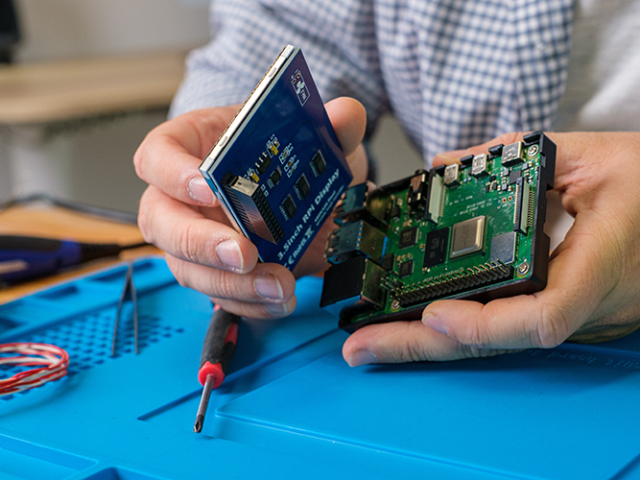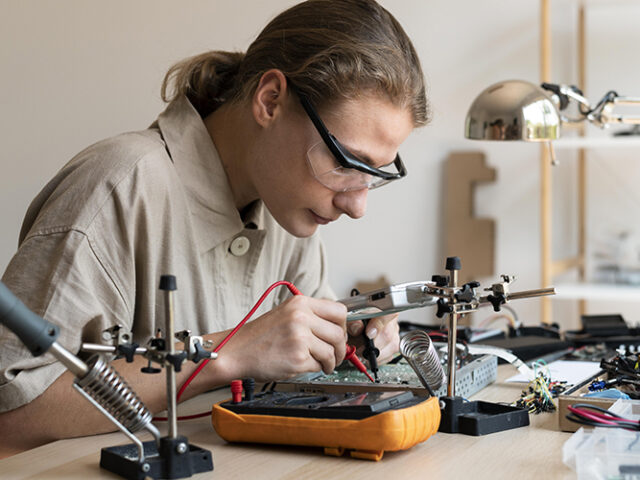In the world of electronics, the oscilloscope is an indispensable tool for engineers, researchers, and hobbyists alike. It serves as the eyes and ears of an electronic technician, providing a visual representation of electrical signals in real-time. This article introduces the oscilloscope, exploring its functionality, types, and applications.
What is an oscilloscope?
An oscilloscope, often referred to as a scope, is an electronic test instrument that graphically displays varying signal voltages, usually as a two-dimensional plot of one or more signals as a function of time. This visualisation allows users to analyse the performance of an electronic device, making it possible to diagnose problems and ensure systems are operating correctly.
Key components of an oscilloscope
Display Screen: This is where the signal is graphically represented. Modern oscilloscopes use LCD or LED screens for crisp, clear displays.
Vertical system: it includes the vertical amplifier and controls the amplitude of the displayed signal. This system determines how tall the waveforms appear on the screen.
Horizontal system: this system controls the time base or sweep of the oscilloscope, determining how the signal is stretched or compressed over time on the display.
Trigger system: the trigger function stabilises the displayed waveform and can set a specific point on the signal for the scope to trigger on and begin a new sweep.
Input connectors and probes: probes are used to connect the oscilloscope to the device under test. They come in various types for different applications.
Types of oscilloscopes
Digital Storage Oscilloscope (DSO): the most common type today, DSOs digitise the input signal, allowing for more complex analysis and signal processing. They store waveforms digitally for future analysis.
Analog oscilloscope: uses a cathode-ray tube (CRT) to display the signal. While they are mostly superseded by digital models, they are still valued for their high analog bandwidth and real-time display.
Digital Phosphor Oscilloscope (DPO): similar to DSOs but with a faster waveform capture rate, making them suitable for observing rare or transient events.
Mixed Signal Oscilloscope (MSO): combines the functions of a DSO with a logic analyser, making them ideal for debugging digital circuits.
Handheld oscilloscope: portable scopes that are ideal for fieldwork or situations where a compact and battery-operated device is needed.
How does an oscilloscope work?
The basic principle of an oscilloscope is to convert the electrical signals into a visual form. The input signal, usually a voltage, is applied to the vertical input, and the oscilloscope displays this signal as a function of time on the horizontal axis. The scope’s vertical system amplifies the signal, while the horizontal system provides a time base against which the signal is plotted.
When a signal is applied, the oscilloscope’s electron beam moves across the screen from left to right. The vertical deflection of the beam is proportional to the amplitude of the input signal, creating a waveform that represents the signal’s voltage over time.
Understanding waveforms
The waveform displayed on the oscilloscope provides crucial information about the signal, including:
- Amplitude: the vertical height of the waveform indicates the signal’s voltage
- Frequency: determined by the number of times the waveform repeats per second
- Phase: comparing two waveforms on the same screen can reveal their phase relationship
- Distortions or irregularities: these might indicate problems in the circuit or the signal
Choosing the right oscilloscope
Selecting an oscilloscope depends on the specific needs of the user:
- Bandwidth: determines the maximum frequency the scope can accurately measure
- Sample Rate: higher sample rates allow for more detailed representation of the signal
- Number of channels: more channels allow for simultaneous observation of multiple signals
- Resolution and accuracy: important for precise measurements
Conclusion
An oscilloscope is a versatile and vital tool in the world of electronics. Whether it’s for complex engineering tasks, educational purposes, or hobbyist projects, understanding how to use an oscilloscope is a fundamental skill in electronics.
You can also read our beginner’s guide to single-board computers.
As well as our guide to microcontrollers.




